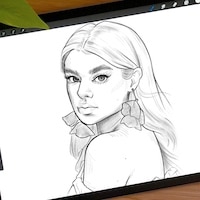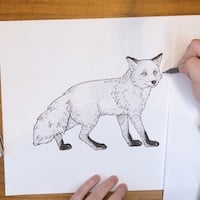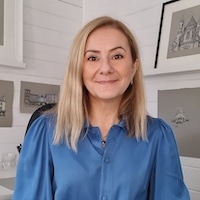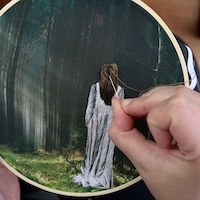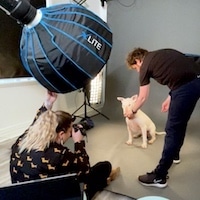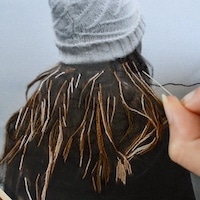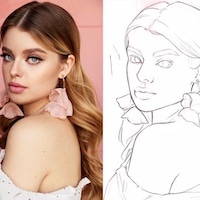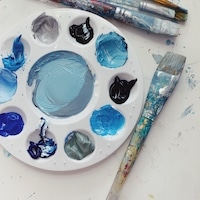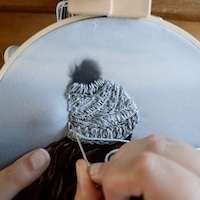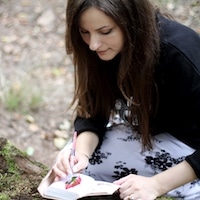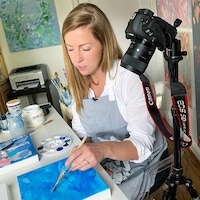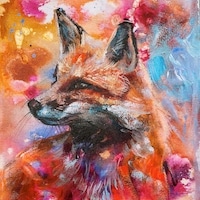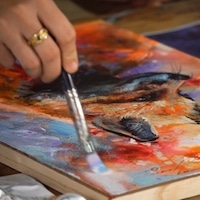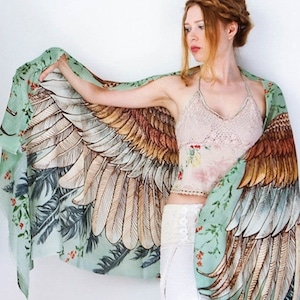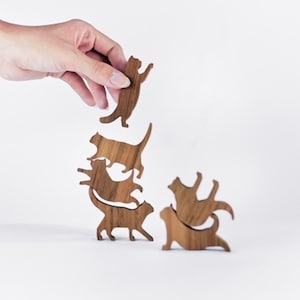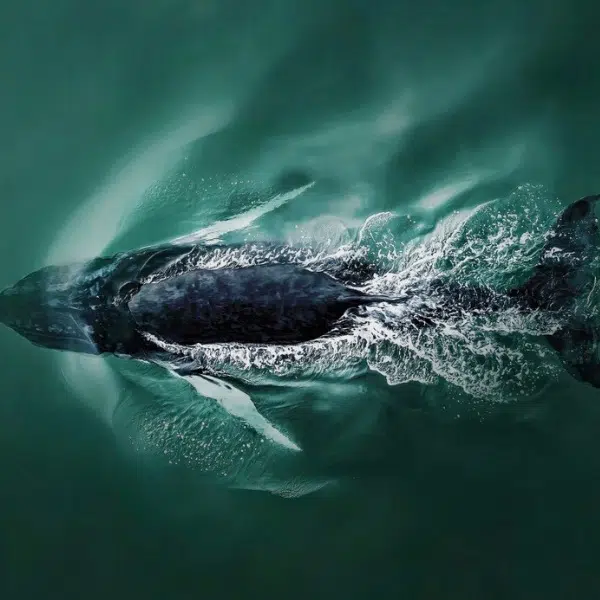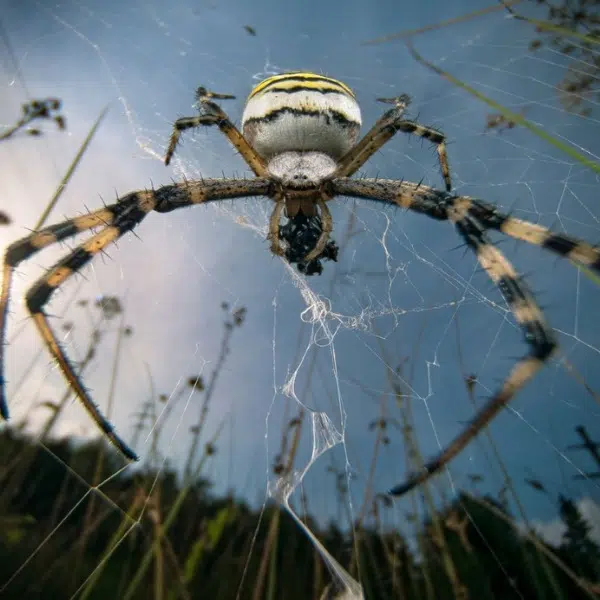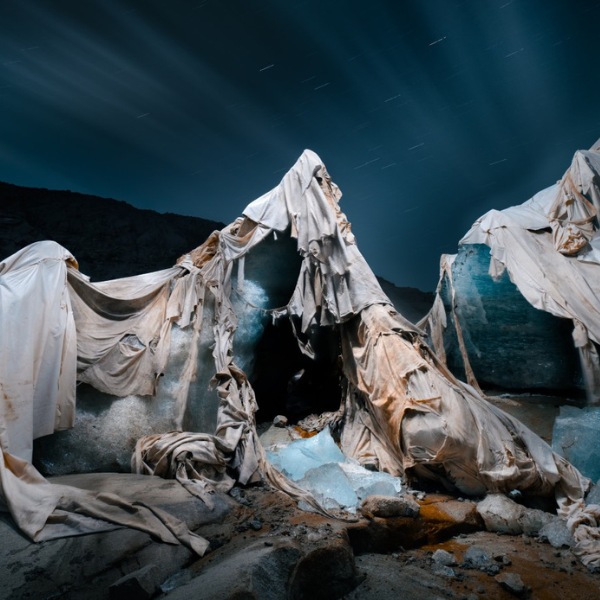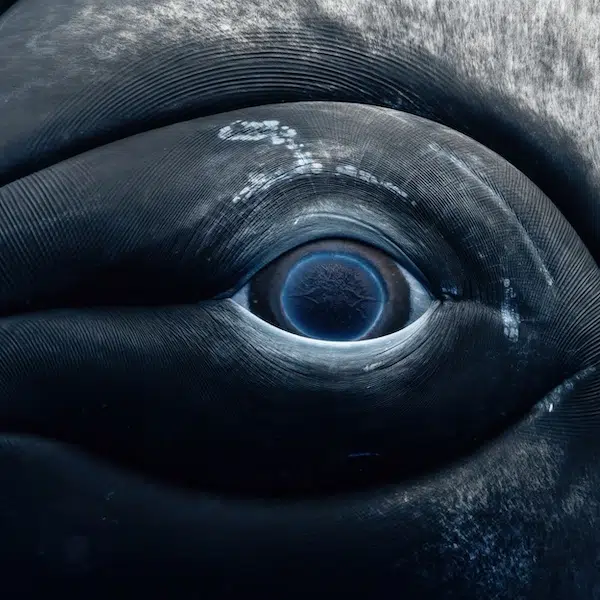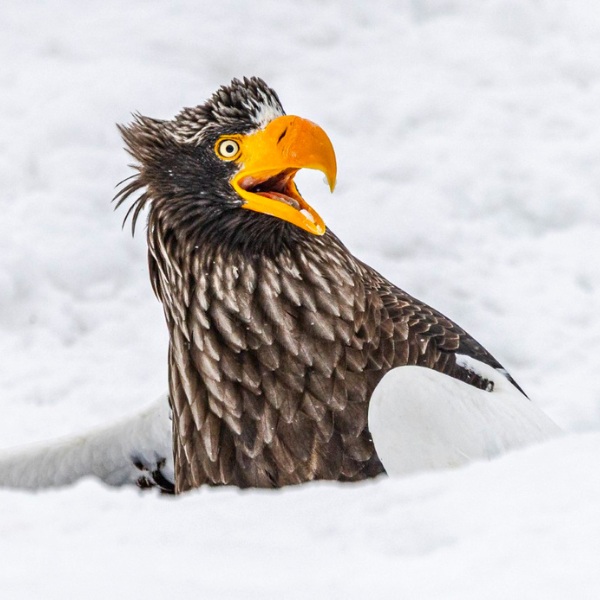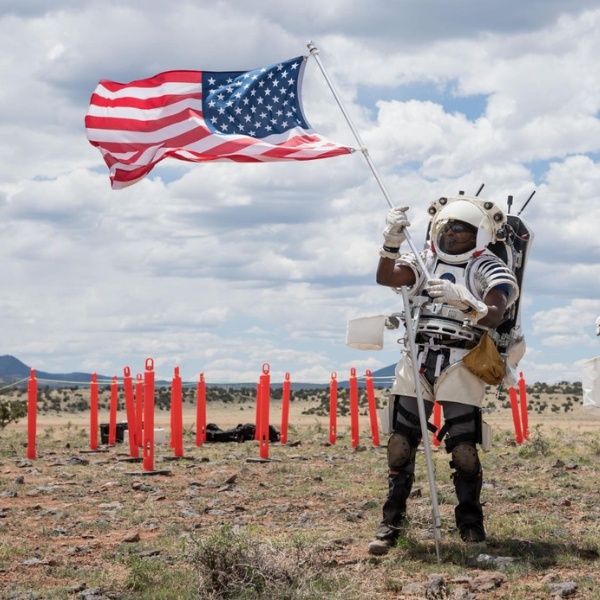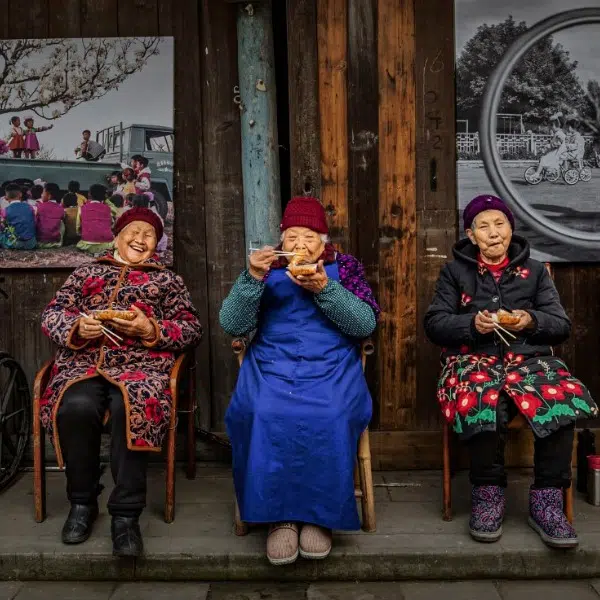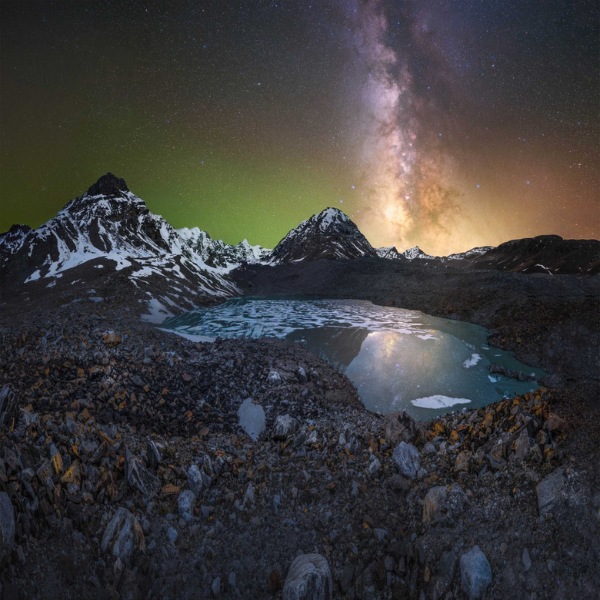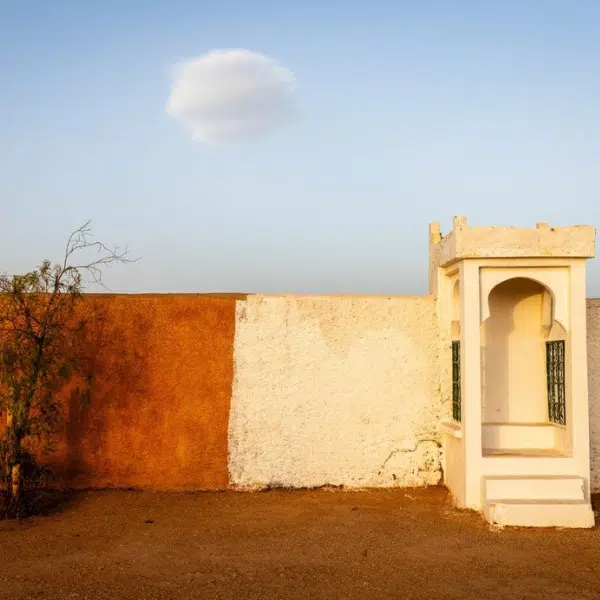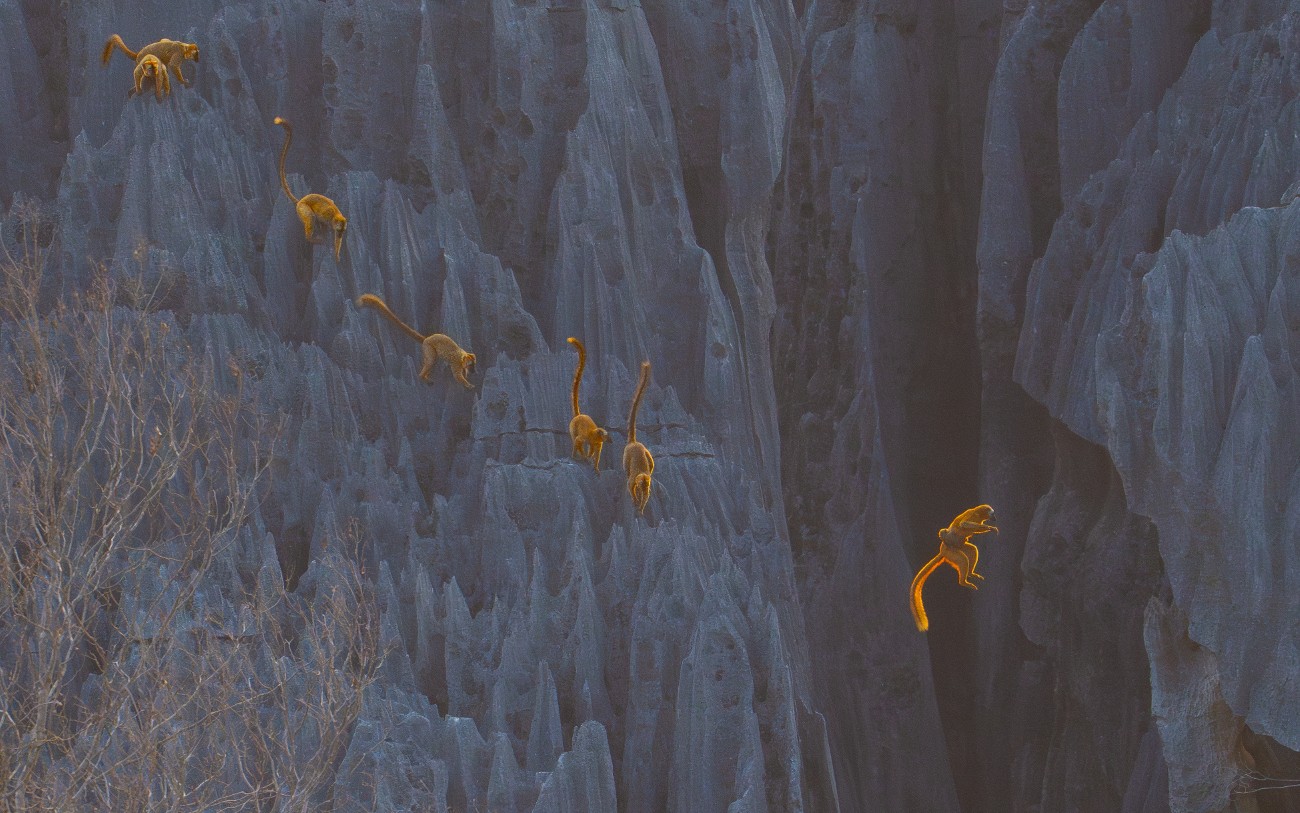
“Leap of Faith” by Zhou Donglin. Grand Prize Winner.
“Lemurs are remarkably lithe creatures. With long tails providing balance and powerful, slender limbs outfitted with opposable thumbs and toes, they move with ease through the craggy limestone spires of western Madagascar’s Tsingy de Bemaraha National Park. Still, leaping over a 30-meter (100-foot) ravine with a baby clinging to your back seems like a daring choice.
To capture this scene, photographer Zhou Donglin had to do some mountaineering of her own. Setting out before sunrise, Donglin spent an hour scrambling to the top of a rocky peak, praying that the elusive brown lemurs (Eulemur fulvus) would show. After a day of disappointingly distant sightings, Donglin finally found some luck as a small troop descended through a forest of stone, glowing gold in the late evening light.”
A bold lemur striking out in search of food won Zhou Donglin the top honor in the 2025 BigPicture Photography Competition. Taken in Madagascar at the end of the dry season, the courageous lemur brings her baby along for the ride, leaping over a ravine to ensure that her infant is fed. It's images like this that define the contest, now in its 12th year.
Run by the California Academy of Sciences and chaired by wildlife photographer Suzi Eszterhas, the winning images share rare slices of the natural world. Whether it's Donglin scrambling up a rocky peak to photograph the lemur or Kat Zhou returning to a dive spot before spotting a female octopus giving her own life for her children, each photographer is willing to sacrifice to get the image they are after.
Photographer Amit Eshel, winner of the Terrestrial Wildlife category, also knows something about sacrifice. It took him two years to see Arctic wolves in the remote reaches of Canada, but his tenacity paid off when he finally came across a pack on a frozen fjord. “I laid down holding my camera with a wide lens and they came over for a very close look,” he says. “At times they were so close they almost touched me, and I could smell their breath.”
Scroll down to see all of the winners and select finalists.
Here are the incredible winners of the 2025 BigPicture Photography Competition.
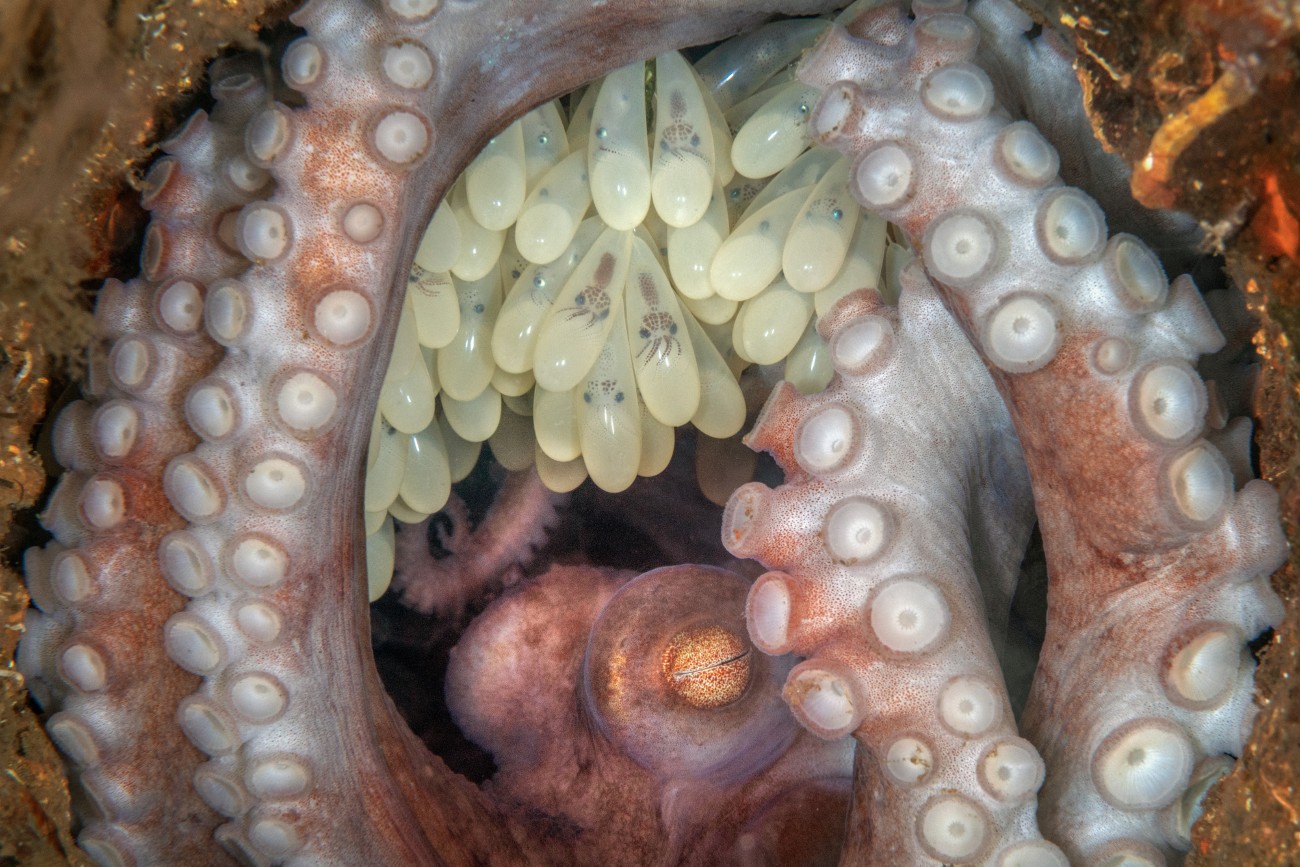
“My Octopus Mother” by Kat Zhou. Aquatic Life Winner.
“Photographer Kat Zhou was diving off the coast of Florida when friends alerted her to this female octopus and her eggs tucked into a pipe of some sort, perhaps a remnant of a shipwreck. Zhou returned four times, trying to capture the mother’s determination to protect her young when they’re most vulnerable. She hopes her work inspires empathy for marine life, including an animal whose behaviors differ wildly from our own but whose maternal instincts are entirely familiar.
The Caribbean reef octopus (Octopus briareus) pictured here broods just a few hundred large eggs. Once she lays her eggs, the female stops eating and guards her growing offspring day and night. Her babies will emerge as fully developed, miniature versions of their parents, ready to change color, squirt ink, hunt for food, and live as small but full-fledged octopuses in the shallow seas around the Caribbean and Gulf of Mexico. Their mother, in contrast, having exhausted herself to ensure her offspring’s survival, will die shortly after they hatch.”
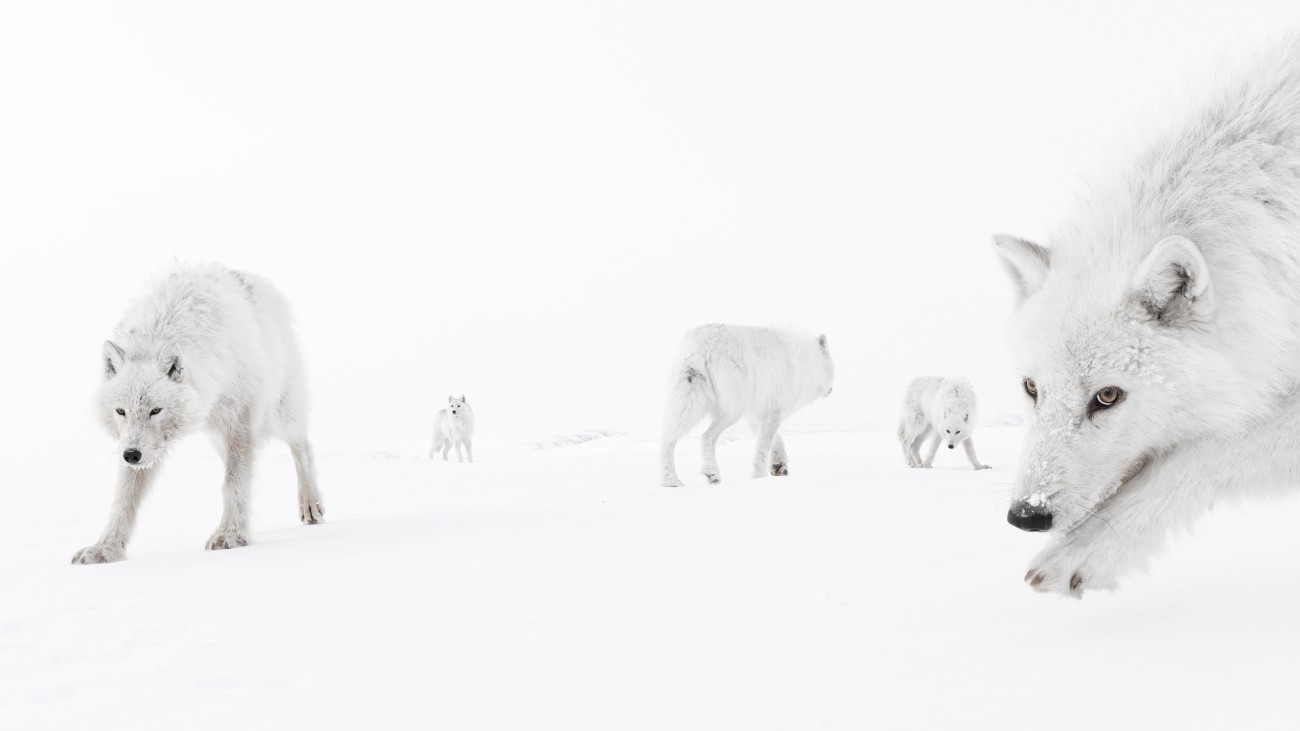
“Part of the Pack” by Amit Eshel. Terrestrial Wildlife Winner.
“Reaching Ellesmere Island, in Canada’s far north, is an adventure of its own. It took six domestic flights for Israeli photographer Amit Eshel to get within striking distance, and then days of traveling by dogsled and snowmobile to make it to the northern part of the island. Eshel undertook the journey in hopes of spotting Ellesmere’s wolves, which have no known history of being hunted and are unafraid of the few human visitors they encounter. Yet only about 200 Arctic wolves (Canis lupus arctos) live on Ellesmere, which is roughly the size of Great Britain, and during Eshel’s first visit in April 2022, he and his Inuit guides searched for two weeks without finding them.
He tried again in 2024. This time, 12 days into the expedition, his group was moving across a frozen fjord in -35 degrees Celsius (-31 Fahrenheit) temperatures when they spotted a single wolf through binoculars. Eight more soon appeared, and the pack moved slowly toward Eshel.”
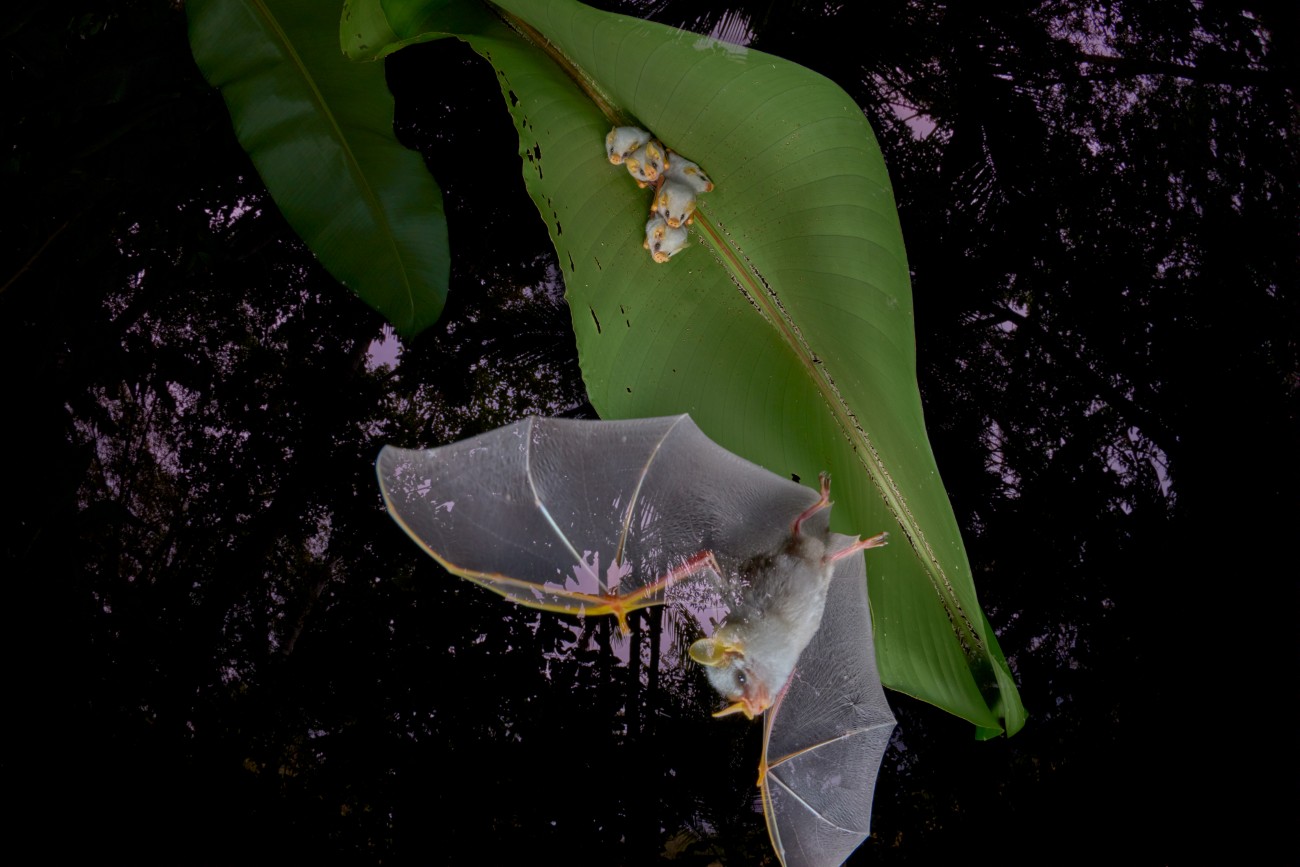
“Tiny Tent Makers” by Dvir Barkay. Winged Life Winner.
“Bats are not ordinarily known for their cuteness. Then again, the Honduran white bat (Ectophylla alba) is no ordinary bat. One of the smallest fruit-eating bats in the world, it’s roughly the size of a golf ball and the weight of a quarter. Even with its wings outstretched, the diminutive species only reaches around 10 centimeters (4 inches). But it’s not only the bat’s stature that’s unique. It’s also one of the few species that makes tents in which to roost.
After finding a suitably large Heliconia leaf 2 meters (6 feet) or so off the ground, the bats work as a team, biting from the edges toward the midrib until the foliage falls in on itself, forming a simple tent that resembles an upside-down V. Groups of four to six bats will nestle together in these verdant shelters to rest until nightfall, when they venture out to find their preferred food: figs. Though they only stay in any given tent for a night or two, they leave their mark in the form of seed-packed feces that can sprout into new trees. Indeed, Honduran white bats don’t just build their own shelters—they also help shape the forests they inhabit.”

“The World of Familiar Insects” by Takuya Ishiguro. Photo Story: In My Backyard Winner.
“It’s an undeniable fact that insects live close to humans at all times, but sometimes they are so small we may not even notice them. And even when we do notice them, they’re often met with disgust and derision. In this series taken in the photographer's native Japan, we’re given an unexpected look into the lives of bugs, wherein the photographer uses his own customized lens to capture unique, up-close images of diversely colorful and impressive species. In this image, we’re shown the unexpected beauty of a Common housefly (family Muscidae) as it shines like a jewel while covered in morning dew. Unfortunately, it won’t be able to fly off until the dew drops evaporate and it completely dries off, making it the perfect portrait specimen.”
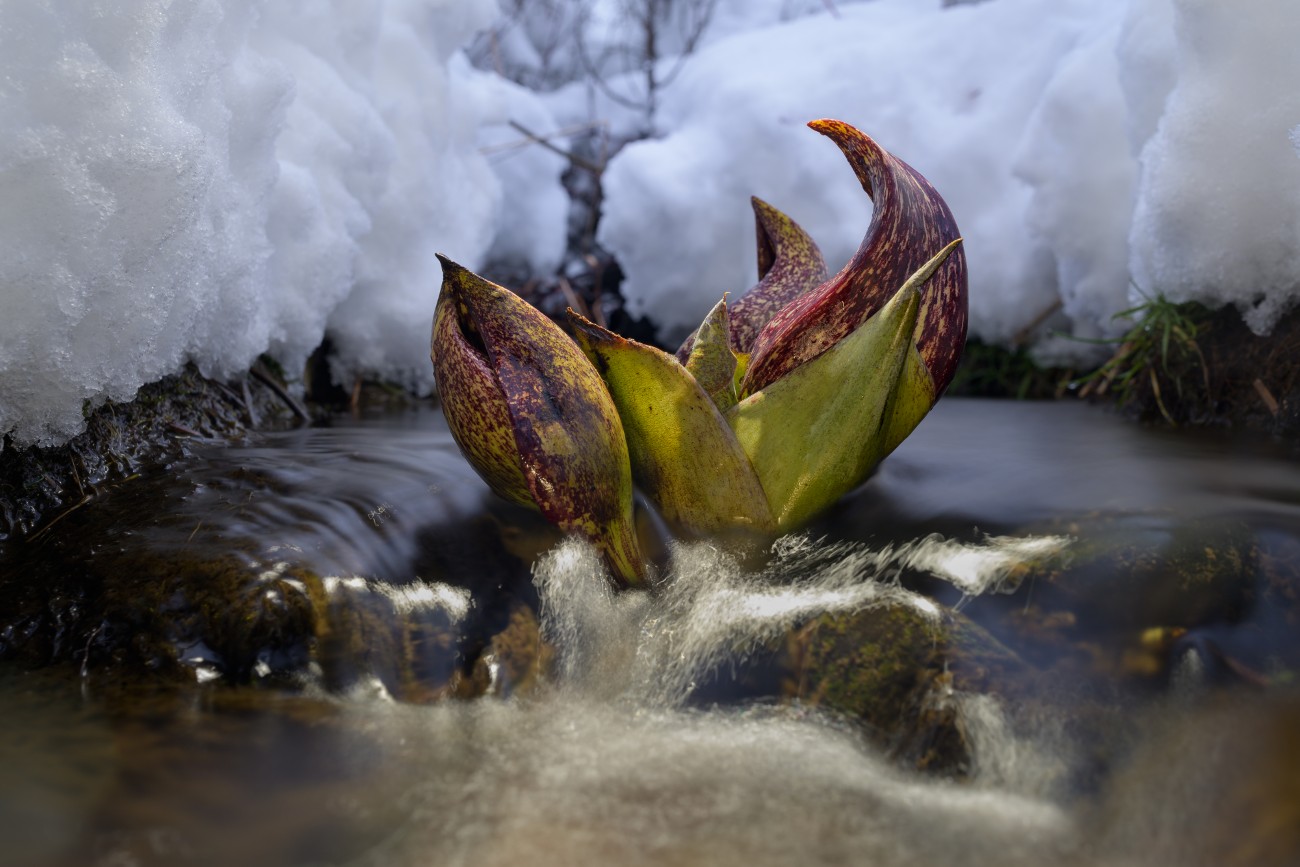
“Early Bloomer” by Ellen Woods. Landscapes, Waterscapes, & Flora Finalist.
“Winters in the northeastern United States are long, cold, and often snowy, so the first signs of spring are a welcome sight. Skunk cabbage (Symplocarpus foetidus) is often one of the earliest plants to emerge, thanks to a unique characteristic: It creates its own microclimate, warming itself to about 23 degrees Celsius (73 degrees Fahrenheit) even when the surrounding air is below freezing.
Despite these remarkable adaptations, skunk cabbage tends to be underappreciated—which is precisely what drew Ellen Woods to this specimen near her home in Connecticut. Woods hopes her photograph not only calls attention to the region’s overlooked flora but also highlights the cold tolerance of a native species in a region where snowfall is becoming increasingly unreliable.”

“Icy Stare” by Marcin Giba. Landscapes, Waterscapes, & Flora Winner.
“Not long ago, it would have been nearly impossible for photographer Marcin Giba to take this image of a fissure on a foot-marked frozen lake in the southern Polish city of Rybnik—and it could become impossible again. Rybnik is one of Poland’s largest producers of coal, and with that abundance has come rampant consumption. Until recently, most homes and residential buildings burned coal for heat, cloaking the city in a thick layer of pollution and giving it the unenviable title of the “smog capital of Poland.” In 2010 alone, Rybnik experienced 130 days where the pollution was both hazardous and visible to the naked eye. Needless to say, such smoggy conditions aren’t conducive to the kind of drone-based photography that Giba uses in his work.
Fed up with the government’s inaction, a group of residents created Polish Smog Alert, an advocacy organization pushing for legislation to suppress the smog. Since their formation a decade ago, the group has helped enact policies that have replaced nearly 10,000 coal boilers across the city. As a result, Rybnik experienced just 16 smog days in 2023.”
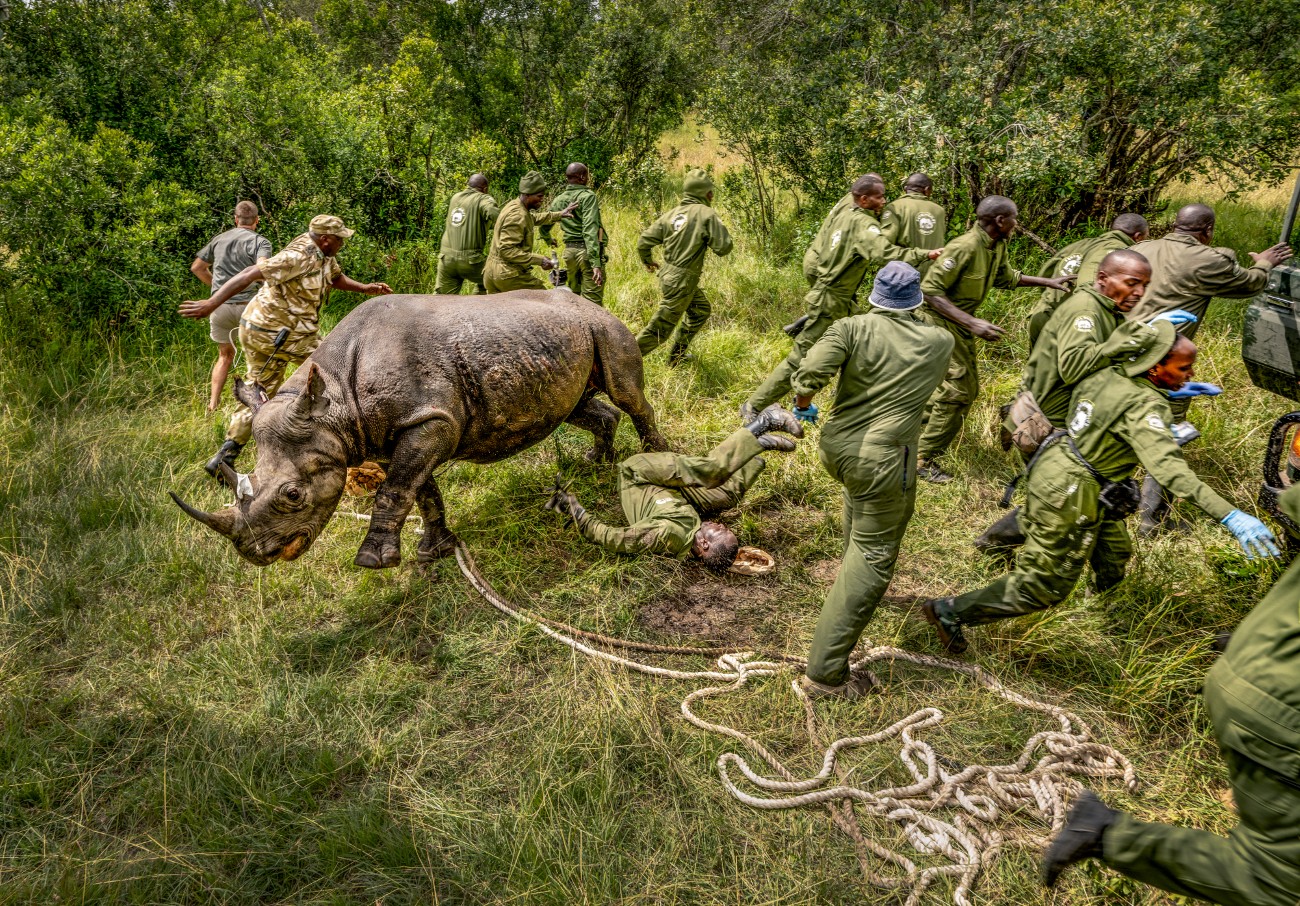
“Rhino Rebound” by Ami Vitale. Human/Nature Winner.
“In January 2024, officials from the Kenya Wildlife Service undertook a massive mission: translocating 21 black rhinoceroses (Diceros bicornis) to a region where they hadn’t lived for half a century. Black rhinos can weigh as much as a small sedan and are known to gore people, which makes moving them a daunting task. But when Kenya’s 16 existing rhino sanctuaries became too crowded, officials had little choice.
Moving such powerful animals can be dangerous for both rhinos and their human caretakers. Photographer Ami Vitale was documenting the translocation of this female from the OI Pejeta Conservancy in central Kenya to the Loisaba Conservancy in the north when the rhino reacted poorly to anesthesia and stopped breathing. Veterinarians and handlers initiated a special resuscitation for large animals and administered drugs to reverse the effects of the anesthetic, saving the animal’s life. Vitale says this image—captured the moment the rhino recovered—speaks to the danger that people are willing to face to bring back an imperiled species.”

“Unwavering Energy” by Sandra Bartocha. Art of Nature Winner.
“Waves impact life on land, tossing sediment onto shore that eventually becomes beaches and dunes where shorebirds and other wildlife find refuge. In Germany, where photographer Sandra Bartocha made this long-exposure image at sunrise, waves deposit up to 4 meters (13 feet) of sand per year in some locations and erode more than 2 meters (nearly 8 feet) per year in others. Whether waves give or take, their impact on the world’s oceans is, shall we say, unwavering.”
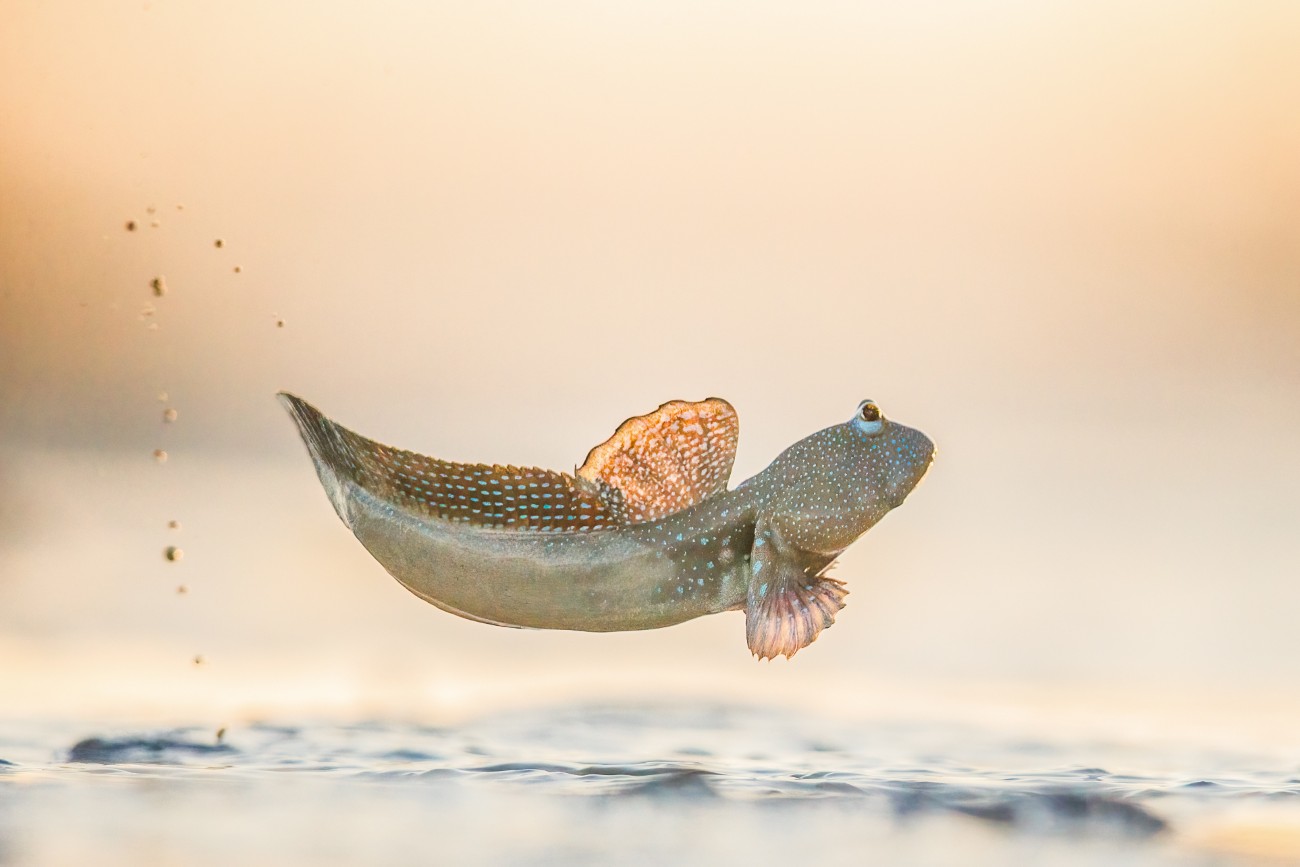
“Puddle Jumper” by Georgina Steytler. Aquatic Life Finalist.
“Erecting his sail-like, iridescent dorsal fin, this male blue-spotted mudskipper wriggles his stout tail and launches himself into the air before falling back to Earth with an unceremonious plop. Females are typically wooed by the highest jumper, a sign that a would-be mate will be strong enough to defend the muddy burrow where she will eventually deposit her eggs.
To capture this moment, photographer Georgina Steytler spent hours in the mud over the course of several days. She took thousands of photos before getting this mudskipper perfectly midflight. But Steytler says the effort was well worth it to highlight “how remarkable these little fish are—a true cross between aquatic and terrestrial life.”








